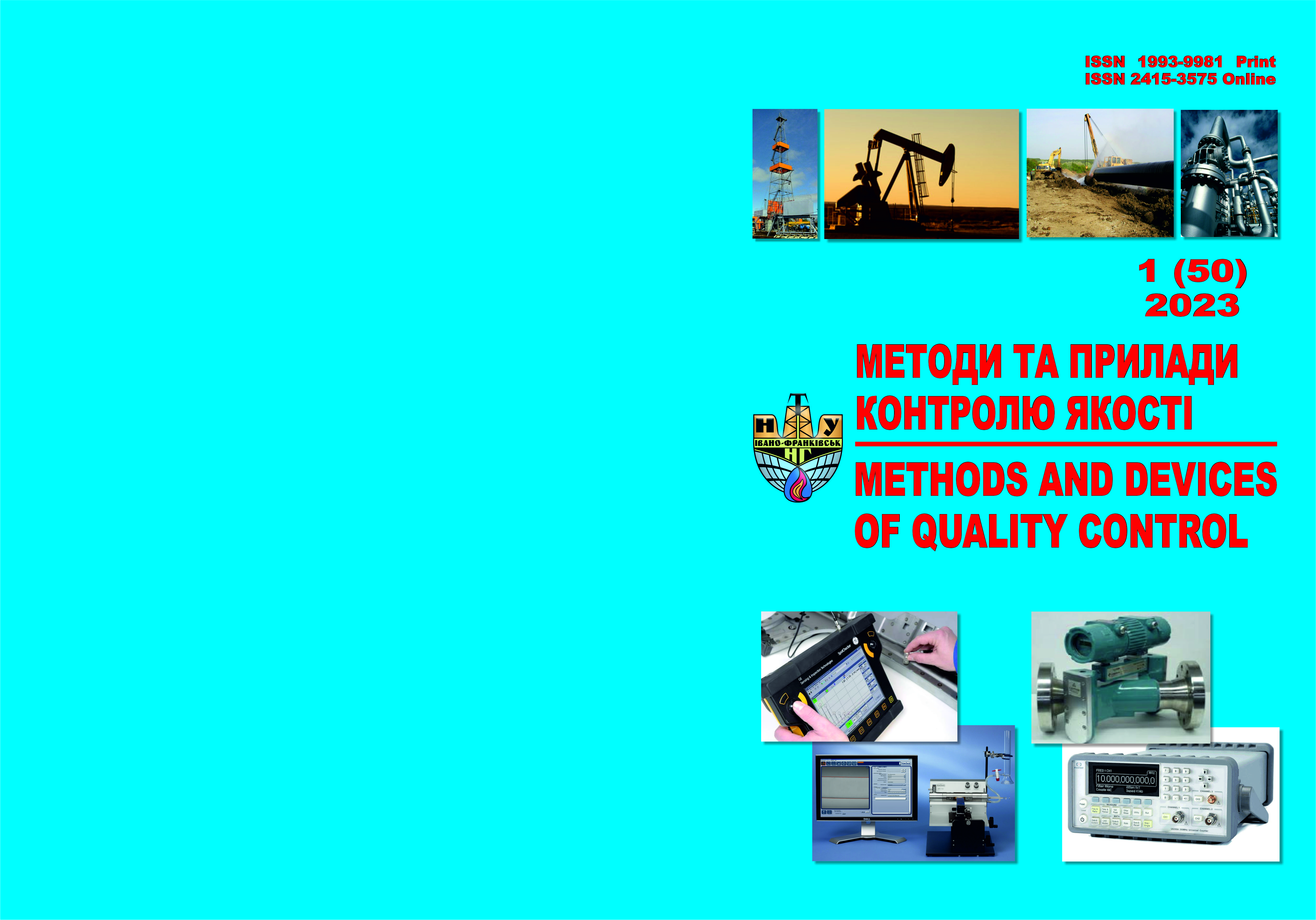УДОСКОНАЛЕННЯ МОДЕЛІ ПРОЦЕСУ ГІДРАТАЦІЇ ЕТИЛЕНУ З УРАХУВАННЯМ ЙОГО НЕСТАЦІОНАРНОСТІ
DOI:
https://doi.org/10.31471/1993-9981-2023-1(50)-60-71Ключові слова:
гідратація, етилен, етиловий спирт, етанол, каталізатор, реакція, етиловий спирт, параметри, температура, тиск, циркуляція, газ, етилен, фосфорна кислота, управлінняАнотація
Проведено детальних аналіз способу отримання етилену, який відіграє важливу роль у розвитку нафтової та газової промисловості. Наведено характеристики етилену та його властивості. Досконало розглянуто вплив температури, тиску та циркуляції етилену на процес. Отримано залежності ступеня перетворення етилену на спирт від кількості кислоти в реакторі, показників процесу гідратації етилену від концентрації етилену в циркулюючому газі, показників процесу гідратації етилену від мольного співвідношення вода-циркулюючий газ. Вибрано найбільш оптимальний варіант та обґрунтовано вибраний спосіб гідратації етилену при різних каталізаторах. Проаналізовано методи, які використовуються в промисловості для отримання етилового спирту та виходячи із порівняння переваг і недоліків існуючих каталізаторів обрано найбільш, економічно вигідний і активний. Обґрунтовано, техніко-економічними розрахунками, спосіб отримання етанолу прямої гідратації етилену. Вибрано оптимальний технологічний режим процесу гідратації, а отже, реакції сприятимуть підвищенню тиску та зниженню температури. Вибраний спосіб періодичного підживлення каталізатора необхідною кількістю фосфорної кислоти значно скорочує витрати на процес. Проведено розрахунок процесу прямої гідратації етилену, що протікає в нестаціонарних умовах, викликаних винесенням фосфорної кислоти з поверхні носія і які ведуть до зниження продуктивність етилового спирту. Для підтримки стабільної роботи каталізатора запропоновано функцію управління, облік якої в кінетичній моделі процесу дозволяє підтримувати продуктивність етилового спирту на постійному рівні. Розроблено математичну модель процесу гідратації етилену, що дозволило підтримувати продуктивність етилового спирту на потрібному (стаціонарному) рівні з найменшими затратами на витрати фосфорної кислоти.
Завантаження
Посилання
Boryn V.S., Feshanych L.I., Melnychuk V. V. Analiz metodiv dlia otrymannia priamoi hidratatsii etylenu. Yevropeiskyi naukovyi konhres : materialy III Mizhnar. nauk.-prakt konf., Madryd, 17-19 06. 2023r. Madryd, 2023. P. 112-119. [in Ukrainian]
Boryn V.S., Feshanych L.I., Melnychuk V. V. Upravlinnia protsesom priamoi hidratatsii etylenu. Innovatsii ta perspektyvy suchasnoi nauky : materialy IV Mizhnar. nauk.-prakt konf., Stokholm, 10-12 06 2023r. Stokholm, 2023. P. 120-124. [in Ukrainian]
Hidzir N. S., Som A. S., Abdullah Z. Ethanol production via direct hydration of ethylene: A review. International conference on global sustainability and chemical engineering, August, 2014. 7p. URL: https://www.researchgate.net/publication/277957681_Ethanol_Production_via_Direct_Hydration_of_Ethylene_A_review.
Daryl A.B., Julien L.T. Ethanol Production by catalytic hydration of ethylene. Integrated Project. 2020. P.21.
Dubovkina I. O. Modeliuvannia protsesiv hidratatsii ta strukturuvannia etanolu v umovakh obrobky DIVE. Skhidno-Yevropeiskyi zhurnal peredovykh tekhnolohii. 2012. Vol. 6. №. 6. P.50-52. [in Ukrainian]
Huang H., Cao С., Wang Y., Yang Y, Lv J., Xu J. Model-Based Analysis for Ethylene Carbonate Hydrogenation Operation in Industrial-Type Tubular Reactors. Processes. 2022. Vol. 10. P. 25.
Semenov I. P., Pisarenko Y. A., Frolkova A.K. Separation of a reaction mixture of ethyl acetate production via ethanol dehydrogenation. Theor Found Chem Eng. 2017. Vol. 51. Р. 418–431.
Carotenuto G., M. di Serio Tesser, Santacesaria E. Kinetic study of ethanol dehydrogenation to ethyl acetate promoted by a copper/copper-chromite based catalyst. Catal. Today. 2013. Vol. 203. P. 202.
Boryn V.S., Feshanych L.I., Melnychuk V. V. Analiz tekhnolohichnoho protsesu priamoi hidratatsii etylenu yak obiekta avtomatyzatsii. Innovatsii ta perspektyvy suchasnoi nauk : materialy VIII Mizhnar. nauk.-prakt konf., London, 20-22 06 2023r. London, 2023. P. 143-152. [in Ukrainian]
Osnovy avtomatyky i avtomatyzatsiia tekhnolohichnykh protsesiv: navchalnyi posibnyk / H.N. Sementsov ta in. Ivano-Frankivsk: IFNTUNH, 2000. 348 p. [in Ukrainian]
Horbiichuk M.I. Modeliuvannia obiektiv i system keruvannia v naftovii i hazovii promyslovosti : navchalnyi posibnyk. Chastyna 1. Ivano-Frankivsk: IFNTUNH, 1999. 199p [in Ukrainian].
Horbiichuk M.I. Modeliuvannia obiektiv i system keruvannia v naftovii i hazovii promyslovosti : navchalnyi posibnyk. Chastyna 2. Ivano-Frankivsk: IFNTUNH, 1999.226 p. [in Ukrainian]
Boryn V.S. Feshanych L.I., Melnychuk V. V. Matematychna model protsesu hidratatsii etylenu z urakhuvanniam yoho nestatsionarnosti. Avtomatsizatsiia ta kompiuterno-intehrovani tekhnolohii : materialy IKh Mizhnar. nauk.-prakt. konf. molodykh uchenykh, aspirantiv i studentiv, Kyiv, 19 kvitnia 2023 r. Kyiv, 2023. P. 61-62. [in Ukrainian]


.png)




